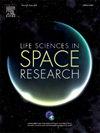Optimizing autonomous artificial intelligence diagnostics for neuro-ocular health in space missions
IF 2.8
3区 生物学
Q2 ASTRONOMY & ASTROPHYSICS
引用次数: 0
Abstract
Spaceflight-Associated Neuro-Ocular Syndrome (SANS) presents a critical risk in long-duration missions, with microgravity-induced changes that threaten astronaut vision and mission outcomes. Current SANS monitoring, limited to pre- and post-flight exams, lacks in-flight diagnostics, highlighting an urgent need for autonomous tools capable of real-time assessment. Grok, an AI platform by xAI, offers promising potential as an advanced diagnostic tool for space-based health monitoring. Originally developed for broader applications, Grok's high-resolution imaging capabilities could be adapted to detect early SANS indicators such as optic nerve edema and shifts in globe morphology, changes linked to fluid redistribution in space. However, realizing this vision requires algorithmic and hardware adjustments to address the unique physiological shifts astronauts experience. By advancing Grok's diagnostic capability, we strongly believe astronauts could manage SANS autonomously, bringing much-needed real-time, high-accuracy diagnostics to isolated, high-stakes environments—essential as humanity embarks on increasingly ambitious missions to Mars and beyond
优化空间任务中神经眼健康的自主人工智能诊断。
航天飞行相关神经-眼综合征(SANS)在长时间任务中是一种严重的风险,微重力引起的变化会威胁宇航员的视力和任务结果。目前的SANS监测仅限于飞行前和飞行后的检查,缺乏飞行中的诊断,这突出了对能够实时评估的自主工具的迫切需求。由xAI开发的人工智能平台Grok作为天基健康监测的先进诊断工具具有很大的潜力。Grok的高分辨率成像功能最初是为更广泛的应用而开发的,可用于检测早期SANS指标,如视神经水肿和球体形态的变化,以及与空间流体再分配相关的变化。然而,实现这一愿景需要算法和硬件调整,以解决宇航员经历的独特生理变化。通过提高Grok的诊断能力,我们坚信宇航员可以自主管理SANS,为孤立的、高风险的环境带来急需的实时、高精度诊断——随着人类开始越来越雄心勃勃的火星及其他任务,这一点至关重要。
本文章由计算机程序翻译,如有差异,请以英文原文为准。
求助全文
约1分钟内获得全文
求助全文
来源期刊

Life Sciences in Space Research
Agricultural and Biological Sciences-Agricultural and Biological Sciences (miscellaneous)
CiteScore
5.30
自引率
8.00%
发文量
69
期刊介绍:
Life Sciences in Space Research publishes high quality original research and review articles in areas previously covered by the Life Sciences section of COSPAR''s other society journal Advances in Space Research.
Life Sciences in Space Research features an editorial team of top scientists in the space radiation field and guarantees a fast turnaround time from submission to editorial decision.
 求助内容:
求助内容: 应助结果提醒方式:
应助结果提醒方式:


